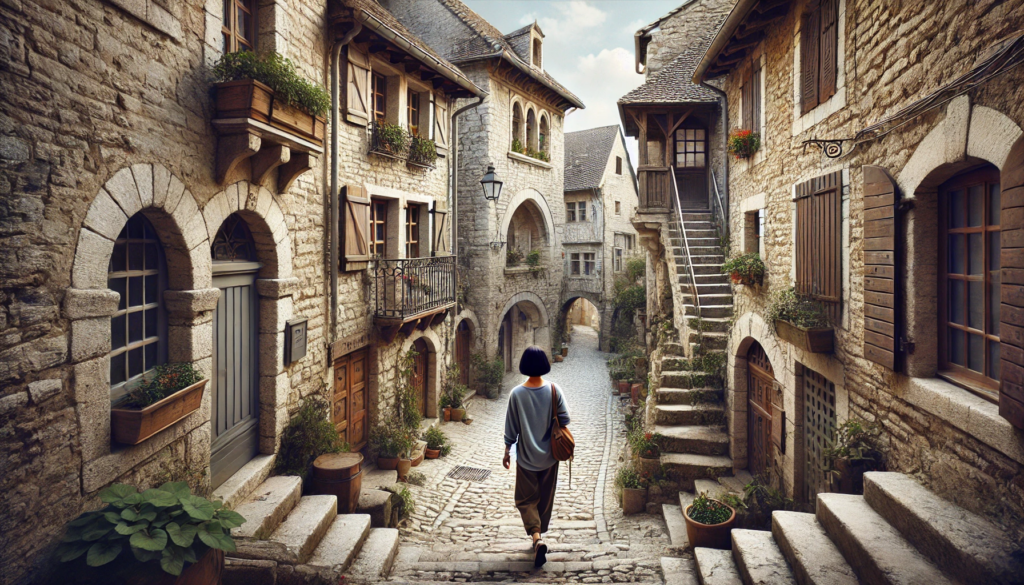ChatGPT:
Arezzo, located in Tuscany, Italy, is a city rich in history, art, and culture.
Origins and Early History
• Etruscan Era (9th–3rd century BC): Arezzo was originally founded as an Etruscan settlement called Arretium. It was one of the most important cities in the Etruscan League, strategically situated along trade routes and known for its pottery, metalwork, and jewelry production.
• Roman Period (3rd century BC–5th century AD): The city was annexed by Rome in 311 BC. It flourished as a Roman colony, producing ceramics, amphorae, and bronze statues. Arezzo became famous for its high-quality terra sigillata pottery, which was exported throughout the Roman Empire.
Medieval Development
• After the fall of the Roman Empire, Arezzo declined but remained a notable religious center.
• In the 11th century, it became a free commune and prospered as a center of commerce, banking, and education.
• The city saw intense political rivalry between the Ghibellines (supporters of the Holy Roman Emperor) and the Guelphs (supporters of the Pope). Arezzo sided with the Ghibellines and was defeated at the Battle of Campaldino (1289) by Florence, which later dominated the city.
Renaissance and Cultural Growth
• Arezzo underwent a cultural revival during the Renaissance. It became known for its contributions to art, literature, and architecture.
• Notable residents include Francesco Petrarca (Petrarch), the famous poet, and Giorgio Vasari, a Renaissance painter, architect, and biographer. Vasari designed parts of Florence’s Uffizi Gallery and is buried in Arezzo.
Modern Era
• In the 19th century, Arezzo developed into a regional center for agriculture and trade.
• It experienced significant damage during World War II but was carefully restored post-war.
• Today, Arezzo is a vibrant city known for its artistic heritage, medieval architecture, and festivals like the Giostra del Saracino, a medieval jousting reenactment.
Legacy
Arezzo maintains its historical charm while blending modernity, making it a key destination for art, history, and culture enthusiasts.
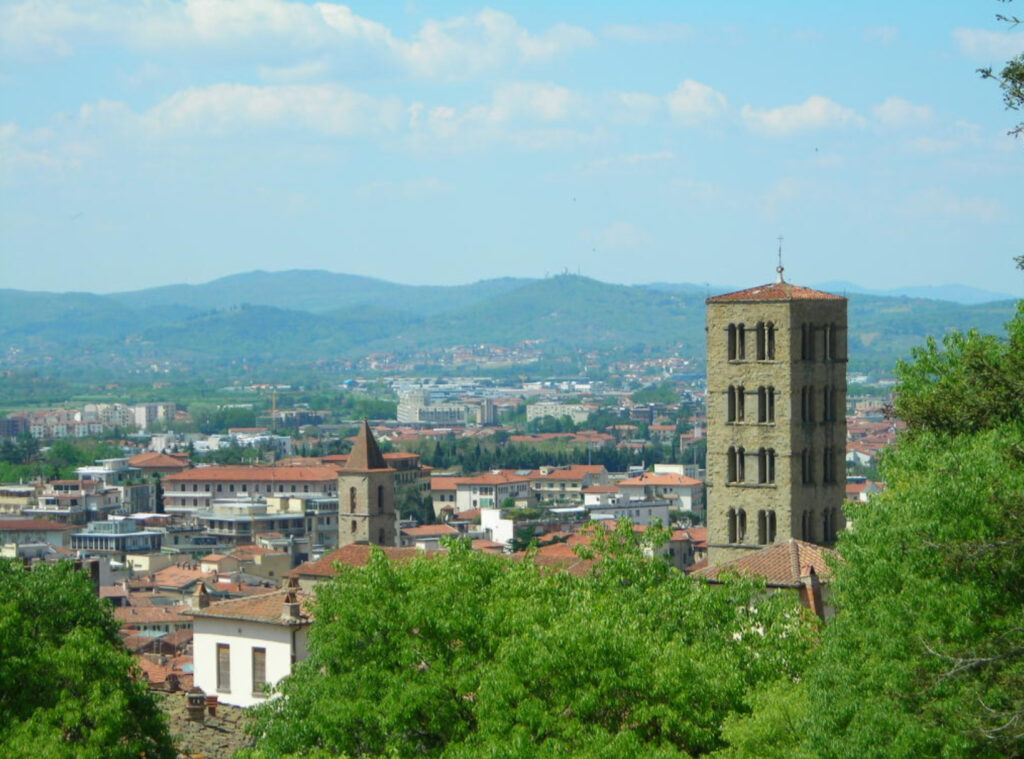
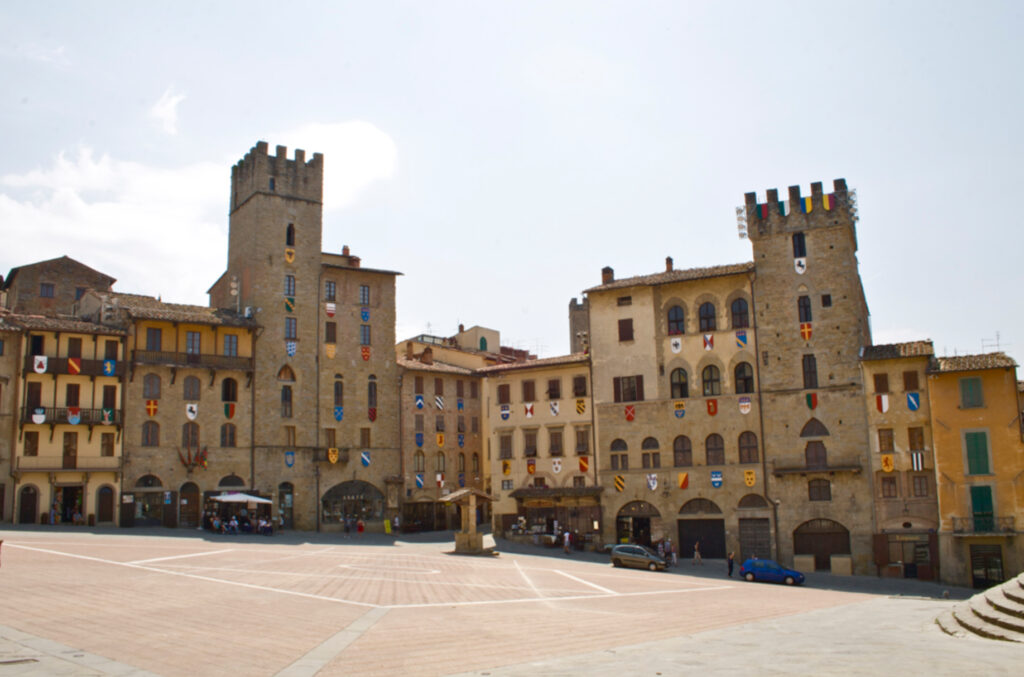
Here is a list of historical monuments and tourist attractions in Arezzo, Italy, along with their dates:
Religious Monuments
1. Arezzo Cathedral (Duomo di San Donato) – 1278–1511
• Gothic-style cathedral with stained glass windows and frescoes, including Mary Magdalene by Piero della Francesca.
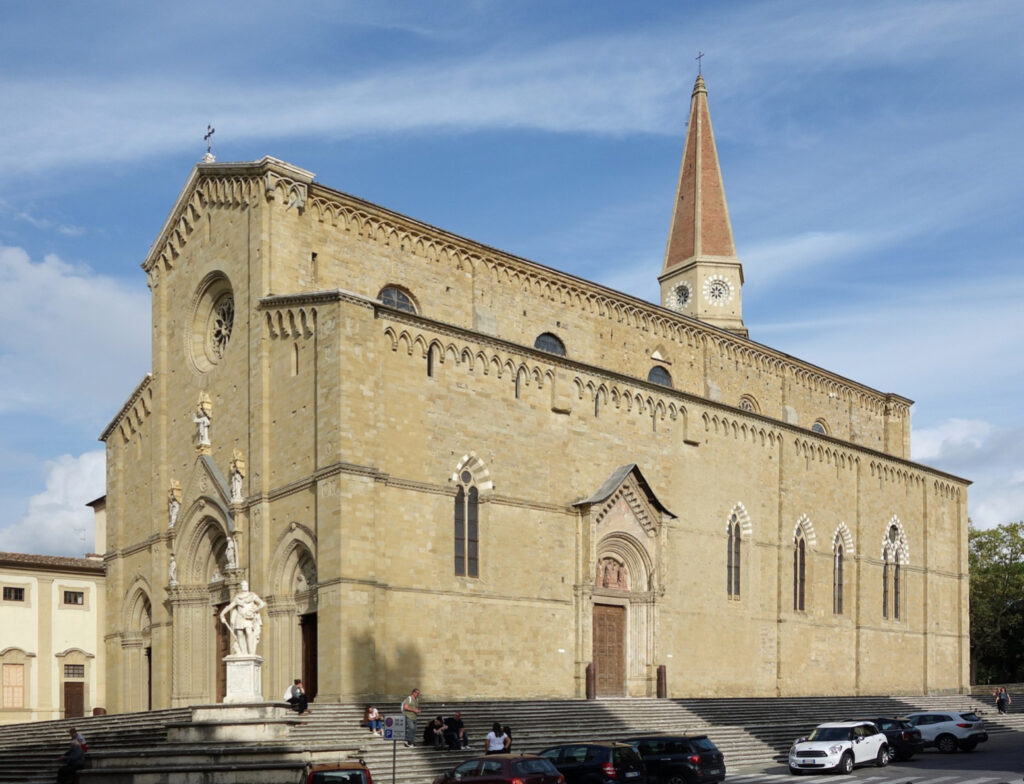
2. Basilica of San Francesco – 13th–14th century
• Famous for Piero della Francesca’s fresco cycle The Legend of the True Cross (1452–1466).
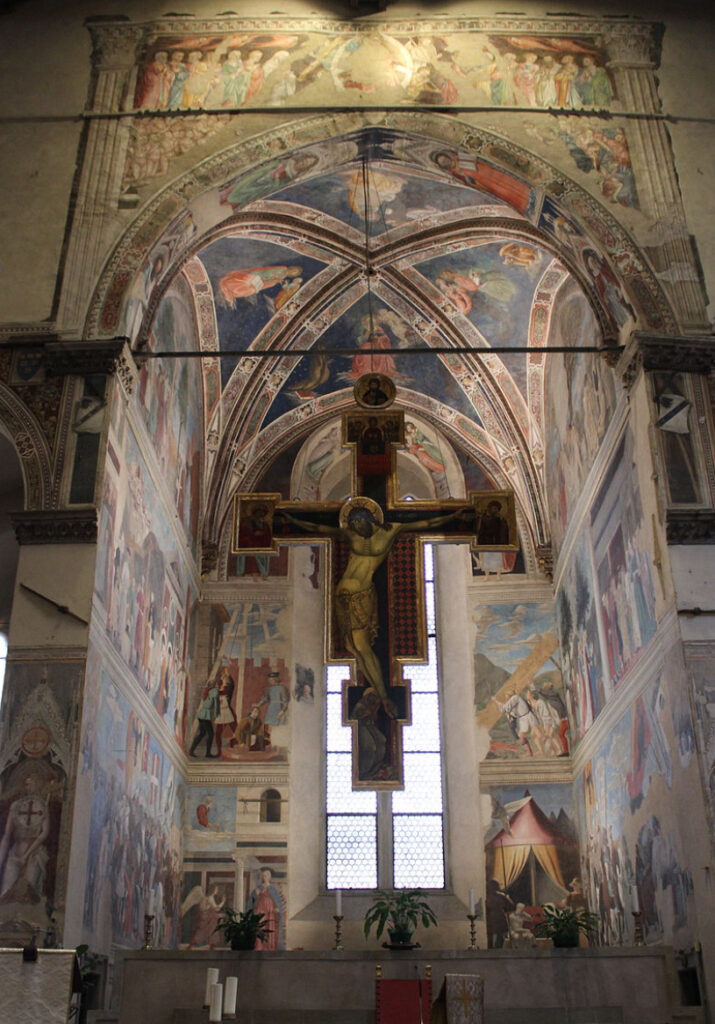
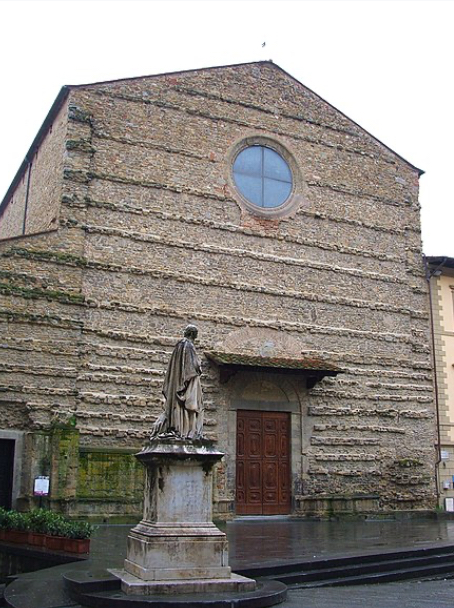
3. Church of Santa Maria della Pieve – 12th century
• Romanesque architecture with a striking façade and bell tower known as the Tower of a Hundred Holes.
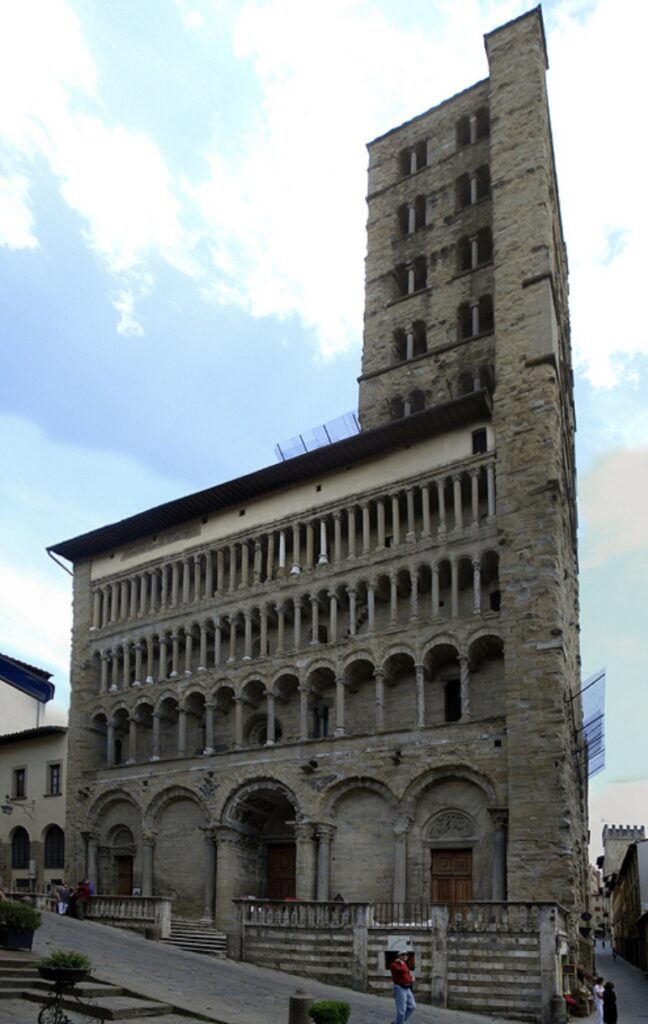
4. Church of San Domenico – 13th century
• Houses the wooden Crucifix (circa 1265) by Cimabue.
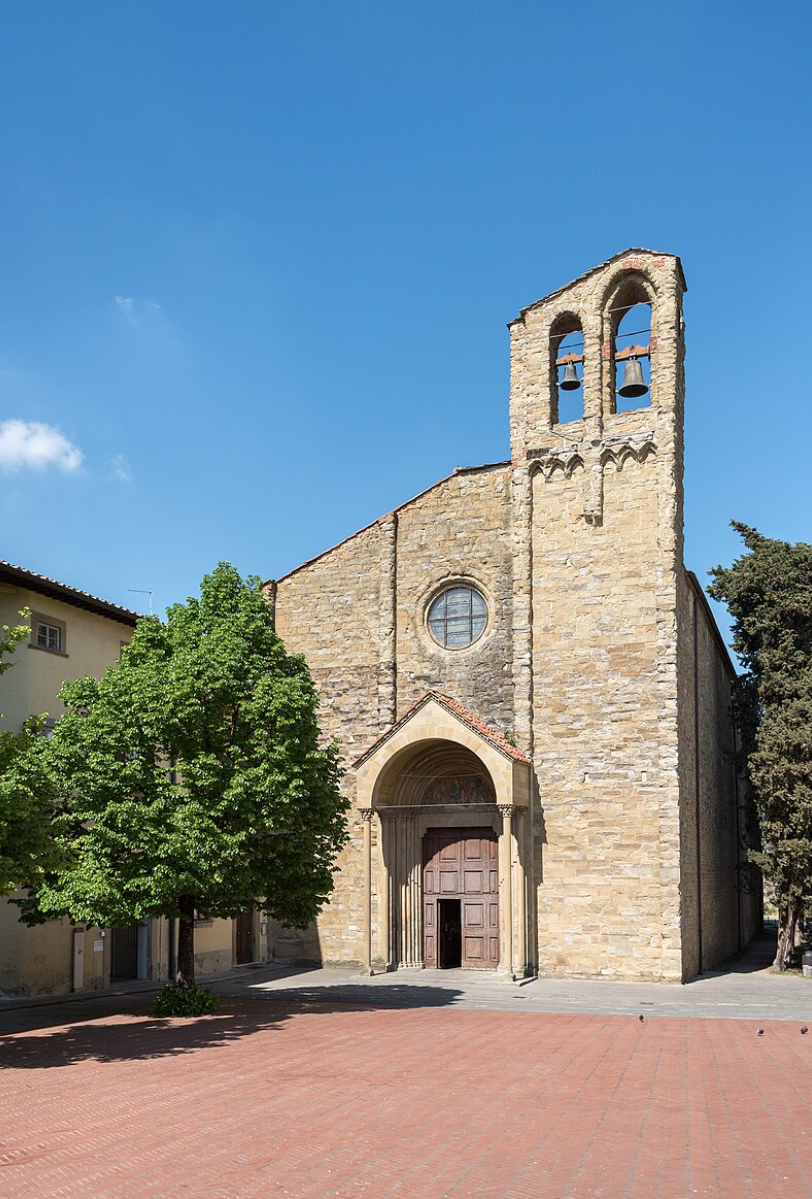
5. Church of Santissima Annunziata – 15th century
• Renaissance design with elegant frescoes.
6. Badia delle Sante Flora e Lucilla – 12th century (rebuilt in the 16th century)
• Features Vasari’s paintings and a stunning Baroque altar.
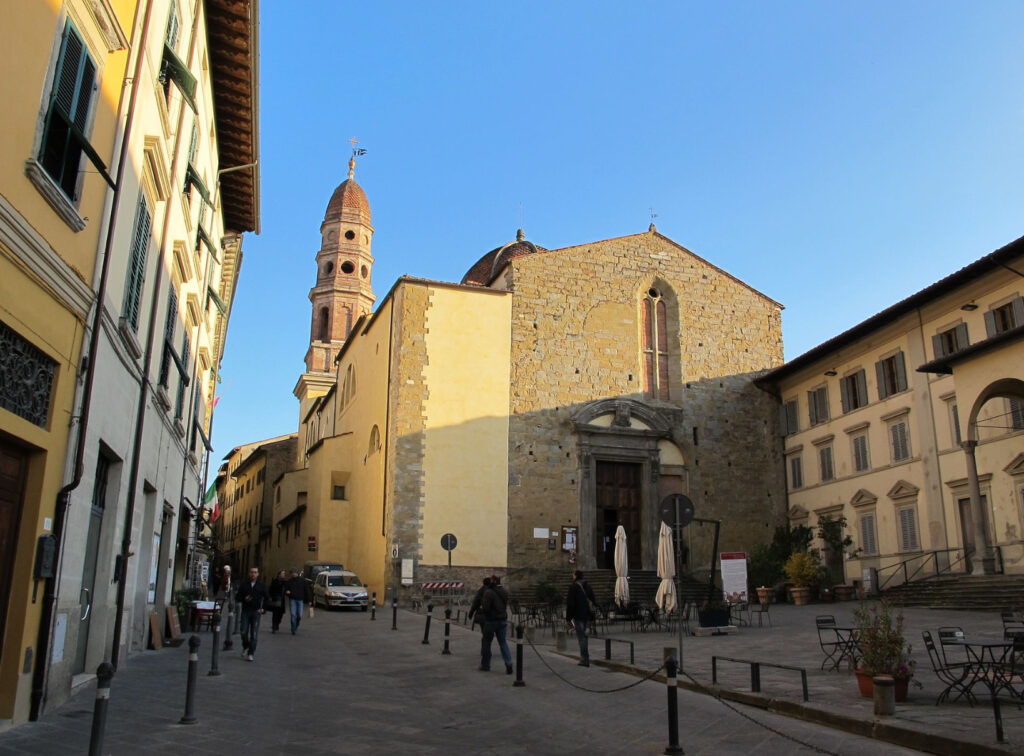
Civil and Military Monuments
7. Piazza Grande (Grand Square) – Medieval origin
• Surrounded by Renaissance and medieval buildings, including the Palazzo della Fraternita dei Laici (14th–16th centuries).
• Hosts the Giostra del Saracino jousting tournament.
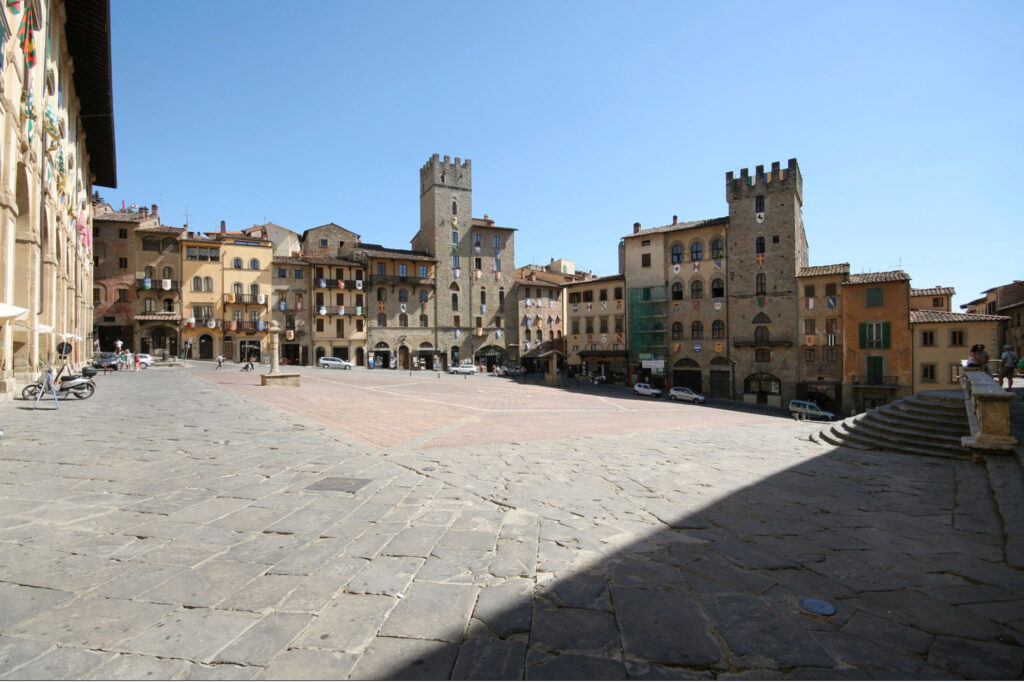
8. Palazzo delle Logge – 16th century
• Designed by Giorgio Vasari, featuring Renaissance arches overlooking Piazza Grande.
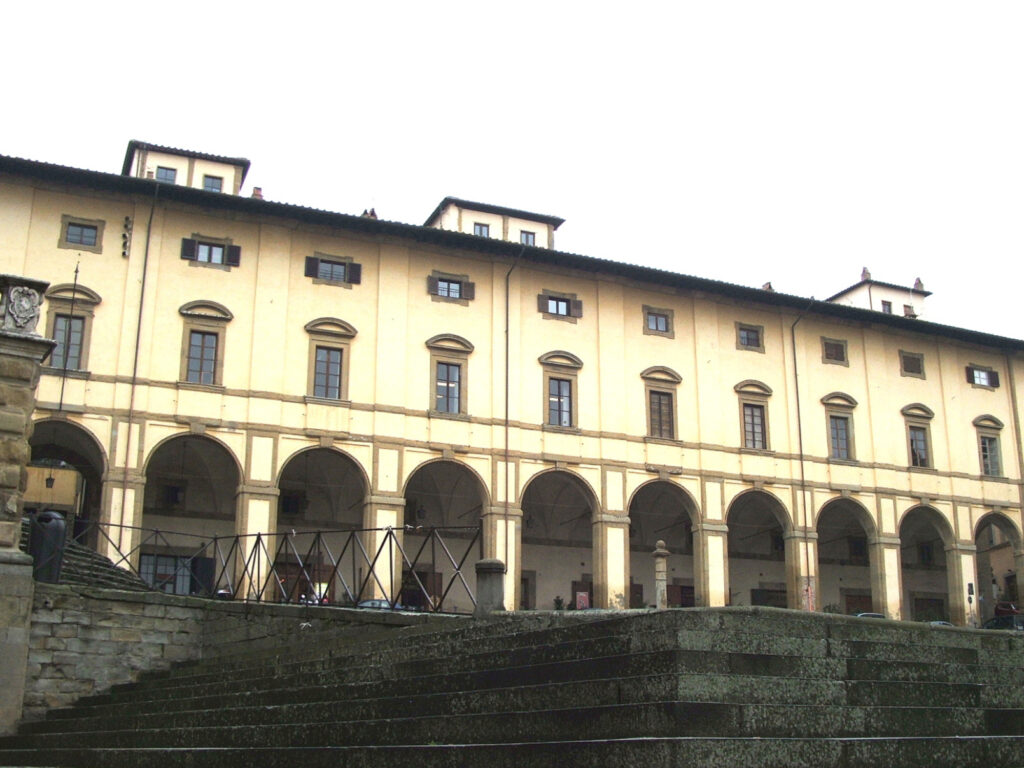
9. Palazzo Pretorio – 14th century
• Medieval palace adorned with noble family coats of arms.
10. Palazzo dei Priori – 1333
• Now the Town Hall, featuring a medieval tower and frescoed interiors.
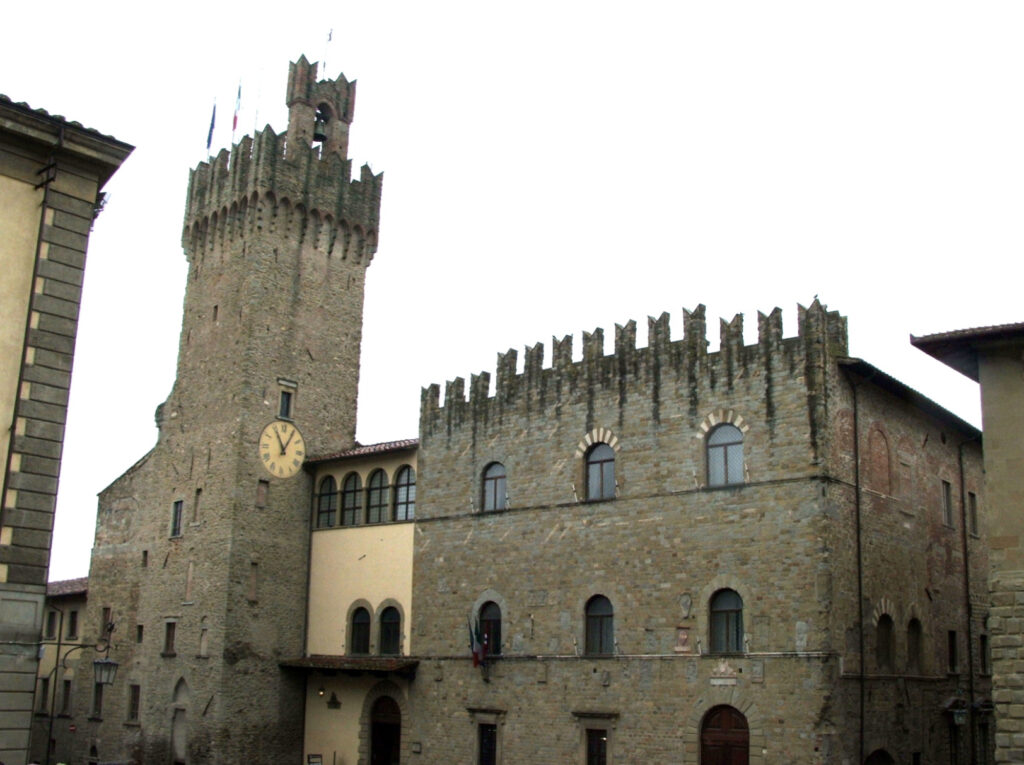
11. Fortezza Medicea (Medici Fortress) – 16th century
• Built by the Medici family as a defensive structure, offering panoramic views of the city and surrounding countryside.
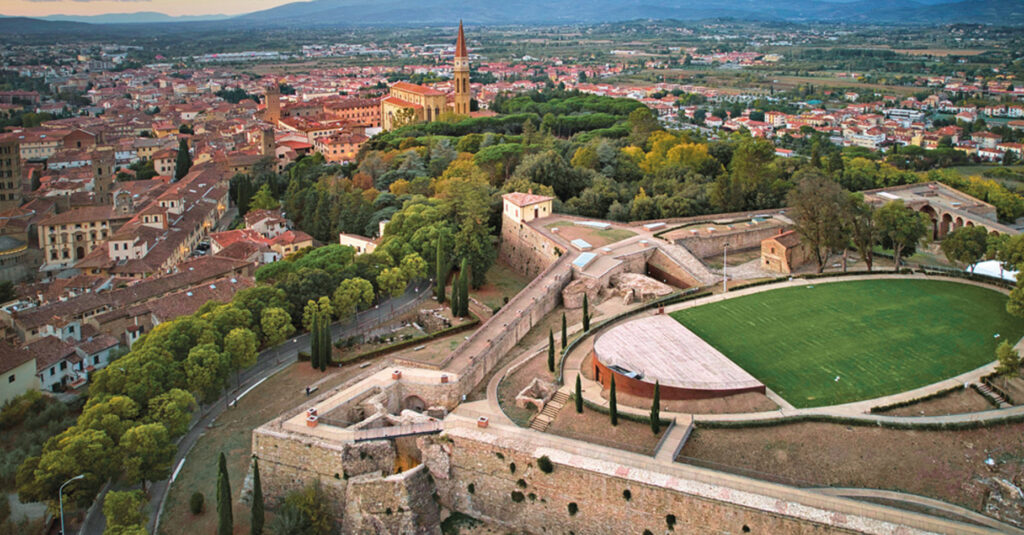
12. Roman Amphitheater and Archaeological Museum – 1st–2nd century AD
• Ruins of a Roman amphitheater and a museum displaying artifacts from the Etruscan and Roman periods.
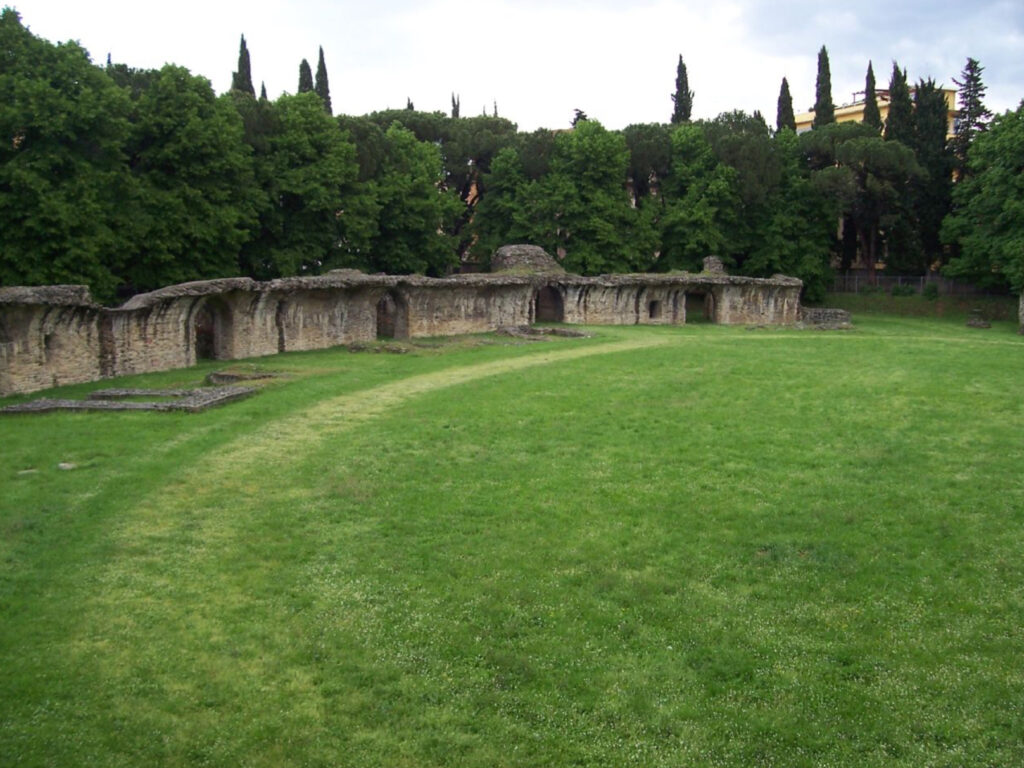
Museums and Cultural Sites
13. Casa Vasari (Giorgio Vasari’s House) – 1542–1548
• The former home of Giorgio Vasari, showcasing his paintings and decorative frescoes.
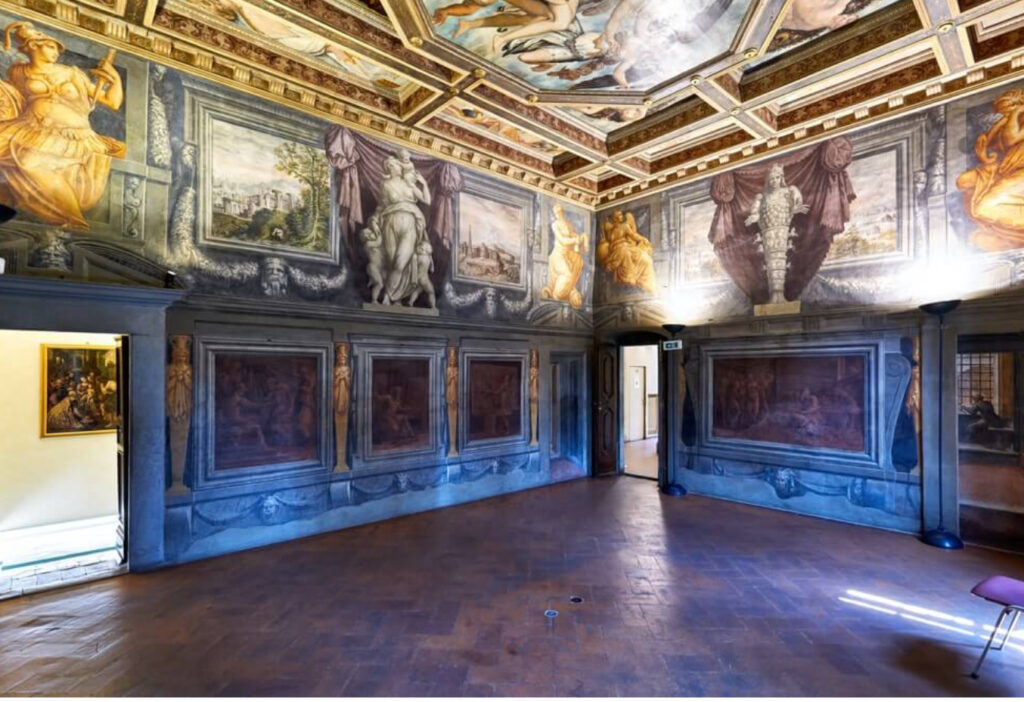
14. Museo Archeologico Mecenate (Archaeological Museum) – Housed in a former Benedictine convent
• Focuses on Etruscan and Roman history, including ceramics, coins, and bronze statues.
15. Museo d’Arte Medievale e Moderna (Museum of Medieval and Modern Art) – Opened in the 20th century
• Features works by artists like Vasari, Margaritone d’Arezzo, and Guido da Siena.
16. Ivan Bruschi House Museum – 20th century
• A museum dedicated to antiques and decorative arts collected by Ivan Bruschi.
Tourist Attractions and Events
17. Giostra del Saracino (Joust of the Saracen) – Medieval origin, revived in 1931
• A historic jousting event held twice a year in Piazza Grande.
18. Antiques Fair (Fiera Antiquaria) – Since 1968
• Monthly antique market attracting collectors and tourists.
19. Passeggiata del Prato – Public park
• Adjacent to the Medici Fortress, offering scenic views and a peaceful setting.
20. Cortona (Nearby Town) – Ancient Etruscan town about 30 km from Arezzo, known for art, history, and views.
This blend of historical monuments and cultural attractions makes Arezzo a rich destination for exploring Italy’s artistic and architectural heritage.
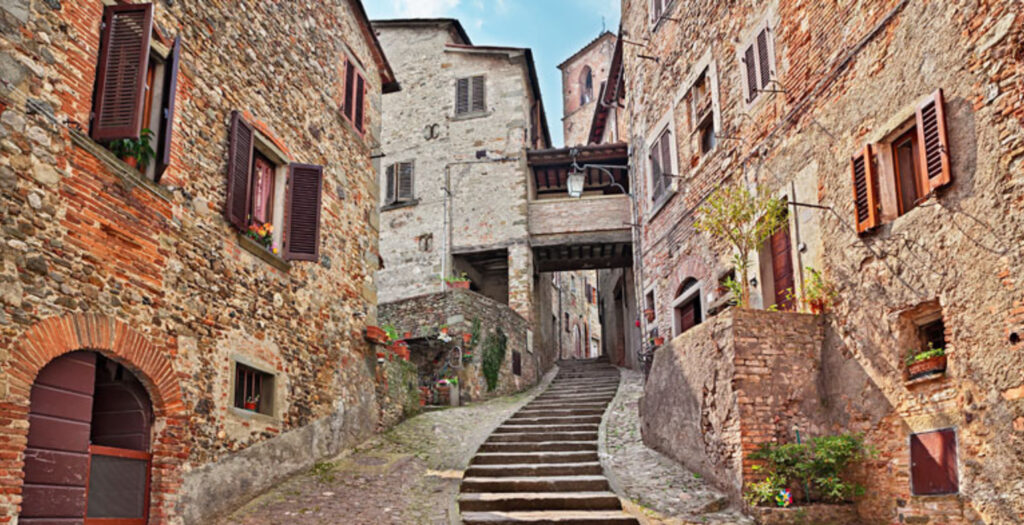
Giorgio Vasari (1511–1574) was an Italian painter, architect, and writer, best known as the father of art history. Born in Arezzo, Vasari was a prominent figure of the Italian Renaissance.
Achievements:
1. Painter and Architect:
• Vasari created numerous works of art, including frescoes and altarpieces.
• Notable works include the frescoes in the Palazzo Vecchio in Florence and decorations in the Vatican.
• He designed the Uffizi Gallery in Florence, one of the world’s most famous art museums.
2. Art Historian:
• Vasari’s most enduring legacy is his book “Le Vite de’ più eccellenti pittori, scultori e architettori” (Lives of the Most Excellent Painters, Sculptors, and Architects), published in 1550 and expanded in 1568.
• It is considered the first comprehensive history of Western art, providing biographies of Renaissance artists like Leonardo da Vinci, Michelangelo, and Raphael.
3. Innovator:
• Vasari introduced the term “Renaissance” (Rinascita) to describe the cultural revival of classical art and learning.
• He emphasized the importance of artistic training and the role of humanism in art.
Legacy:
Vasari’s contributions as an artist and chronicler shaped how Renaissance art is studied today. His house in Arezzo, Casa Vasari, is now a museum showcasing his frescoes and artistic style.
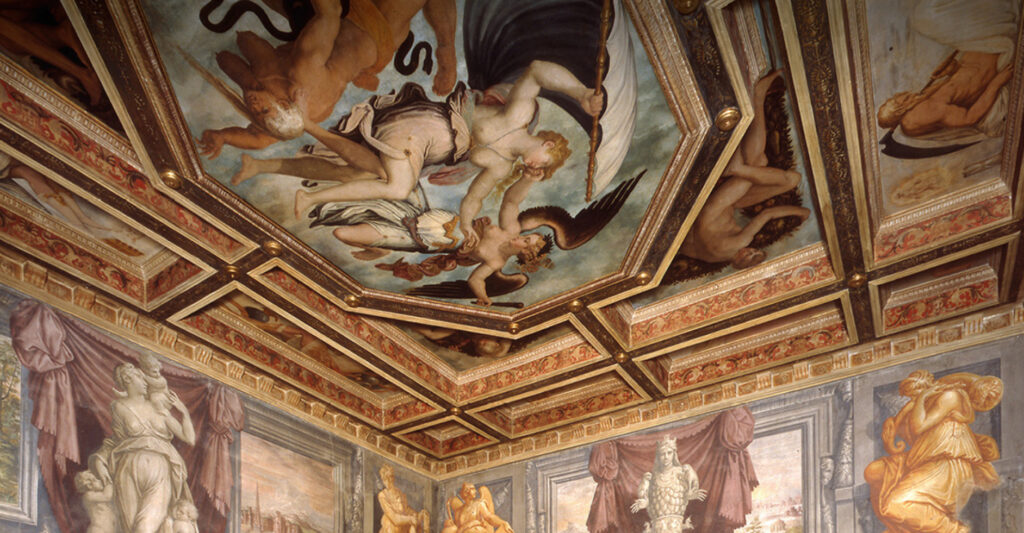
One-Day Itinerary for Arezzo
Morning: Exploring History and Art
1. Breakfast at Caffè Vasari (8:30 AM – 9:15 AM)
• Enjoy a traditional Italian breakfast with a cappuccino and cornetto (pastry) in Piazza Grande, the heart of Arezzo.
2. Piazza Grande and Palazzo delle Logge (9:15 AM – 10:00 AM)
• Admire the medieval and Renaissance architecture surrounding this iconic square, including Palazzo delle Logge, designed by Giorgio Vasari.
3. Basilica of San Francesco (10:00 AM – 11:00 AM)
• Visit this 13th-century church to see Piero della Francesca’s famous fresco cycle, The Legend of the True Cross.
4. Arezzo Cathedral (Duomo di San Donato) (11:15 AM – 12:00 PM)
• Walk to the Gothic-style cathedral, renowned for its stained glass windows and frescoes, including Mary Magdalene by Piero della Francesca.
Midday: Tuscan Lunch
5. Lunch at La Torre di Gnicche (12:30 PM – 2:00 PM)
• Savor Tuscan specialties such as pici all’aglione (hand-rolled pasta with garlic and tomato sauce) or chianina steak paired with a glass of Chianti wine.
Afternoon: Art, Museums, and Views
6. Casa Vasari (Giorgio Vasari’s House) (2:15 PM – 3:15 PM)
• Explore the beautifully decorated home of Giorgio Vasari, showcasing his frescoes and artistic legacy.
7. Roman Amphitheater and Archaeological Museum (3:30 PM – 4:30 PM)
• Discover Arezzo’s Roman heritage, including ancient ruins and exhibits of Etruscan and Roman artifacts.
Late Afternoon: Relaxation and Shopping
8. Passeggiata del Prato (4:45 PM – 5:30 PM)
• Stroll through this peaceful park near the Fortezza Medicea, offering panoramic views of the city and countryside.
9. Antiques Shopping or Café Break (5:30 PM – 6:30 PM)
• Browse antique shops in the historic center or enjoy coffee and pastries at Caffè dei Costanti, a historic café.
Evening: Dinner with Local Flavors
10. Dinner at Osteria dell’Agania (7:30 PM – 9:30 PM)
– Conclude the day with authentic Arezzo cuisine, such as ribollita (Tuscan vegetable and bread soup) or tagliata di manzo (sliced beef steak). Pair the meal with a glass of Vino Nobile di Montepulciano.
This itinerary blends Arezzo’s historical highlights with its rich food traditions, offering a memorable day in Tuscany.
